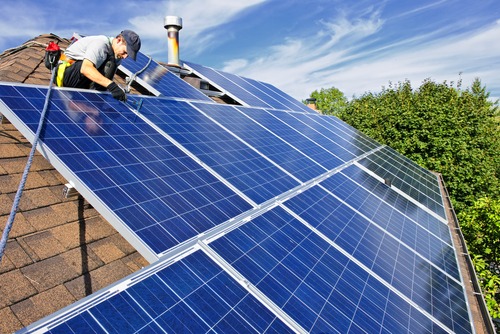Hawaiian Electric postpones launch of new rooftop solar, energy storage programs until April

In order to implement changes approved by the Hawaii Public Utilities Commission (PUC), Hawaiian Electric intends to delay the launch of its new rooftop solar and energy storage programs until April 1.
These programs, originally slated to begin March 1, were created under the oversight of the PUC. They will consolidate Hawaiian Electric’s existing solar and energy storage programs into a new, streamlined form, improving customer options, increasing renewable energy deployment and incentivizing customers to provide grid services. As part of this, the new framework will include a smart distributed energy resources (DER) program to replace legacy rooftop solar programs and a new incentive program known as Bring Your Own Device, which will replace the Battery Bonus program.
BYOD is a supplemental incentive program customers participating in Smart DER or a legacy rooftop solar program can enroll in, offering extra grid services to Hawaiian Electric in return for compensation. The Smart DER program will include an export and non-export option, without system size caps. The non-export option will allow all technology types.
The PUC granted Hawaiian Electric an additional month to revise the DER Program Structure as a result of comments from the solar industry. Such changes will include elimination of a requirement that enrollees in the new programs must participate in Hawaiian Electric’s new Shift and Save pilot program with time-varying electric rates. The utility noted that previous solar programs were always meant to be interim programs on the path to something more permanent.
Barring any further delays, Smart DER and BYOD will be open for enrollment beginning in April, after legacy solar programs close to new applicants. Battery Bonus applications on Maui will be accepted until enrolled capacity hits 15 MW or until June 30, 2024, whichever comes first. For those already in legacy solar programs, transition to Smart DER must take place within seven years from the initial agreement date.
For participants in Smart DER, exported energy will be compensated at differing rates depending on island and time of day, sectioned off between overnight, daytime and evening peak rates. As for customers involved in BYOD, up to three incentives will be possible: an upfront payment of $100 for each kW of capacity the customer commits to making available during BYOD events (capped at $500/customer and $1,000/customer with low and moderate incomes), a monthly incentive of $5 per kW of commitment capacity and credits for controlled energy exports during BYOD events.
